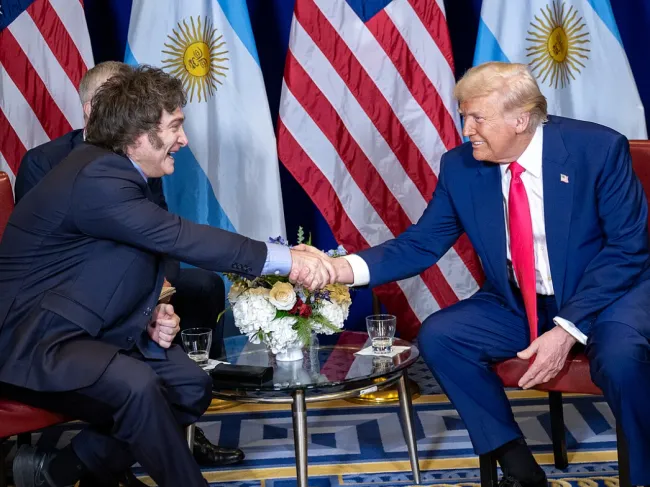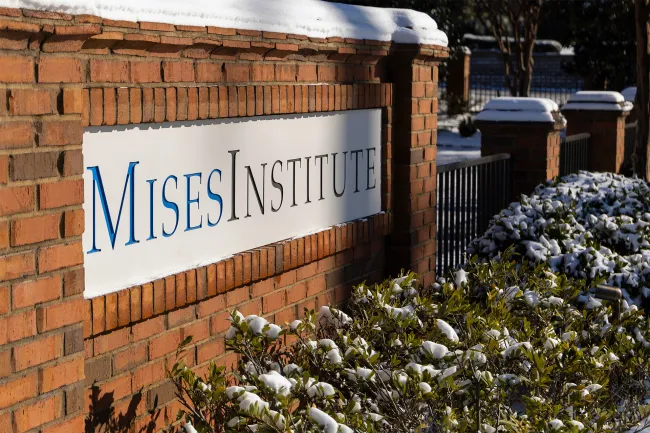Philipp Bagus has just published a blog post in which he explains “what would have happened to the demand for pesos if Javier Milei had closed the central bank on his first day in office.” He argues that such a closure would have reinforced the strongly inflationary tendencies that prevailed in Argentina when President Milei took office. He states:
Demand for pesos would have fallen because there would have been no more hope that the central bank would ever exchange the pesos for dollars. Argentinians would have tried to sell their pesos for dollars on the market. The peso exchange rate would have collapsed.
Furthermore, closing the central bank would have meant it would not have paid interest on its interest-bearing liabilities to the commercial banks. A large portion of the commercial banks’ investments would have become worthless. The resulting losses would have led to a collapse of the Argentine banking and financial system. Chaos, panic, and social unrest would have ensued. The loss of confidence in the peso would have accelerated. Argentinians would have fled to the dollar. […] But the peso would not “disappear” as long as it still possessed purchasing power in the eyes of its users, but only when, from the perspective of its holders, it no longer had any exchange value for all practical purposes. In other words, “disappear” means that there would have been an extreme inflation rate, similar to the hyperinflation of the peso.
It’s highly likely that the chaos caused by the rapid depreciation of the peso, as in a hyperinflationary situation, would have been exploited by the opposition for a coup.
This argument does not go very far. But it touches questions of economic principle and therefore warrants four short comments.
One, Professor Bagus is ambiguous about the exact nature of the peso’s “redeemability” or “convertibility” into US dollars. Is it fixed-rate convertibility, or simply the possibility of exchanging pesos for dollars at a variable rate (“a chance that pesos will be exchanged for dollars in some form in the future”)? If we are talking about the latter scenario, then clearly the convertibility of the peso is not called into question by the abolition of the central bank.
Let us assume, then, that with the possible disappearance of the central bank, there would no longer have been any hope that the peso would be convertible into dollars at a fixed rate. Ceteris paribus, as Bagus explains, and we agree with him, this would have reduced the demand for pesos.
But how important is this factor? As Philipp Bagus presents it, there is only a short step between this decline in demand for money and hyperinflation. But hyperinflation does not arise from a loss of confidence alone, but from a loss of confidence combined with an enormous increase in the money stock. However, the abolition of the central bank does not mean that the money stock will increase. As we have said, it means the destruction of the hope that the peso will be convertible into dollars at a fixed rate and therefore, ceteris paribus, a decline in demand for pesos. This is one factor among others that weighs on the demand for money. Is it more important than the simultaneous disappearance of the uninterrupted and substantial increase in the money supply? It is permissible to doubt this.
Two, we must consider that the central bank creates money via credit. Closing the central bank would therefore mean that outstanding loans would not be extended and that the money stock would be in free fall. How would this have led to price inflation, or even hyperinflation?
Three, Professor Bagus considers a crucial factor: the collapse of the Argentine banking and financial system that would follow the abolition of the central bank. But, again, he is mistaken about the consequences for the price level. Ceteris paribus, such a collapse leads to deflationary effects, or even a deflationary spiral, because the money stock in the broad sense is in free fall when commercial banks collapse. It goes hand in hand with price increases only when accompanied by massive increases in the amount of base money (when the central bank bails out the commercial banks); however, this would be impossible if the central bank were closed.
Four, Philipp Bagus argues that the collapse of the banking and financial system could lead to panic and social and political unrest. We agree on this point. It is precisely the main task of any reformer to anticipate this type of problem, prepare the population, and take temporary measures to help the most vulnerable during the transition phase. But if this problem is taken as a pretext to not abolish the central bank, then we are leaving the libertarian approach and join the statists.
The well-known socialist Yanis Varoufakis has recognised this incoherence and argued that Javier Milei “is no libertarian” but “beholden to Argentina’s oligarchs.” He stated:
The well-known socialist Yanis Varoufakis has recognised this incoherence and argued that Javier Milei “is no libertarian” but “beholden to Argentina’s oligarchs.” He stated:
If you (unlike me) truly believe in the markets’ superior wisdom, and want to rid Argentina of political constraints placed on the market mechanism, which market do you liberate first? The money market, surely. Which price distortion do you drive your chainsaw through first? The fixed (or bounded) exchange rate, unquestionably. And what is the last thing you do? Precisely what Milei did: borrow zillions of dollars, pile them up on top of an already unbearable heap of public debt, to prevent the money market from choosing freely the exchange rate of your currency.
Let us therefore hope that last Sunday’s electoral success will finally prompt the Milei government to get rid of central banking. It will not have to fear any sort of price-inflation. But it needs to lead by example and prepare the population to the short-term hardship such a reform is likely to entail.


